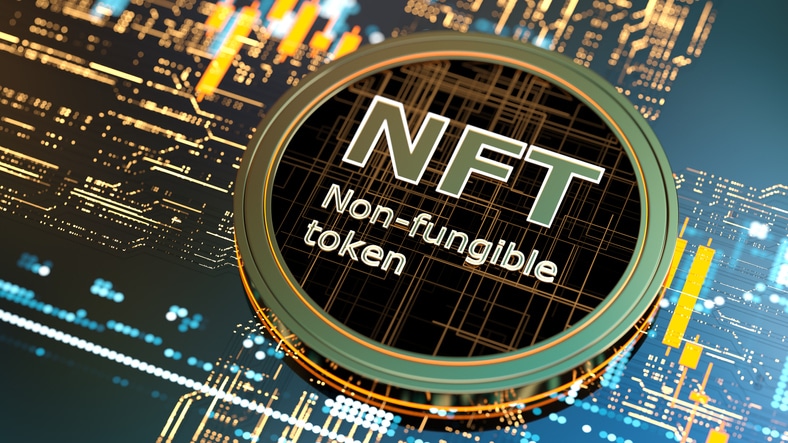Understanding the Role of Non-Fungible Tokens (NFTs)
Non-fungible tokens or NFTs are rising in popularity as more people discover their importance. These tokens come with unique metadata and identification codes, making it easier to distinguish individual tokens. Unlike digital currencies, such as Bitcoin and Ethereum, you cannot trade or exchange NFTs. They are cryptographic assets representing the value of physical items, such as artwork and real estate, on a blockchain platform.
Another significant difference between non-fungible tokens with cryptocurrencies is that the latter are identical and can be replicated. These characteristics are useful for trading and exchanging currencies. On the other hand, NFTs help enhance trading efficiency for tangible assets like artwork. By adopting tokens, blockchain platforms mitigate fraud risk.
It is possible to use non-fungible tokens to represent property rights, people’s identities, and other items. The characteristics of each token expands the possible use cases. With NFTs, users can conveniently eliminate intermediaries, and it becomes easier to connect the target audience with tangible assets.
An added benefit of using non-fungible tokens is simplifying transactions and introducing new markets.

NFT mania
The Covid-19 health crisis played a significant role in boosting the popularity of non-fungible tokens. However, many experts attribute NFT mania to the need for asset diversification and experimentation. Artists have embraced the tokens, thanks to the ability to trace ownership and authenticity of tangible assets like artwork. Likewise, artists can boost income by monetizing their artwork.
Musicians and other digital products can combat duplication and piracy of their new releases using NFTs. They will find it more practical to achieve this objective by authenticating ownership. The empowerment of artists is essential to revolutionizing the digital art market. It is no surprise that a recent Christie’s online auction featured several NFT art pieces. This high-profile NFT auction helped propel the tokens into the limelight.
Other notable NFT transactions include The Kings Leon’s famous offer to fans. They offered vinyl records and tickets to future tours. Meanwhile, project NBA TopShots sold a wide selection of digital collectibles in a highly publicized non-fungible token transaction.
Characteristics of NFTs
The digital representation of tangible assets comes in the form of a digital footprint known as a hash. Depending on size, the representation can consist of the digital asset itself. Alternatively, it can appear as metadata, which describes the object stored in a physical location (off-chain).
Experts are exploring ways to develop technical standards that enable the interoperability of tokens across various blockchain platforms. Many non-fungible tokens use the ERC721 standard associated with the Ethereum blockchain. On the other hand, the ERC20 standard is common among Ethereum-based NFTs.
The non-fungibility of NFTs makes them non-divisible and distinguishable. They also have a characteristic uniqueness that prevents replication and interchanging or selling the tokens.
NFTs cannot serve their intended purpose outside of a blockchain system. They require this environment for transactions to take place securely. When you create or mint a non-fungible token, the blockchain system records the event. Once created, you can transact with the token via digital marketplaces and auction houses.
The records of subsequent transactions for a particular NFT appear on the same blockchain or distributed ledger. These records help link the token to an owner. Payments for the transactions come in the form of an Ethereum-based unit known as gas.
Individual platforms (digital marketplaces and auction houses) select the currency used to pay for NFT transactions. Some platforms allow payments in fiat money, stable coins, and digital currencies. Transactions using cryptos necessitate the involvement of exchanges, such as Coinbase.
Network congestion and computational power required to handle the transaction determine the amount of gas paid by users. Thus, you can expect to pay higher fees if the network is busy or the computational power requirements are higher.
Summary
Since non-fungible tokens have no clear regulatory or legal framework guiding their use, a lot depends on individual NFTs’ characteristics. Some tokens fall under the Markets in Financial Instruments Directive (MiFID). NFTs falling outside of this regulatory framework may still have links to other frameworks.
The tokens are capable of reinvesting modern finance ecosystems by representing physical assets in the digital space. Blockchain plays an integral role in boosting the importance of NFTs in today’s world. Smart contracts’ tamper resistance is vital to the integrity of NFT transactions.

My passion is to make my mark on the world in a positive and lasting way. I want to set an example for my son that his father can compete with integrity in today’s world, be very successful, and leave the world a better place for him.
Combining my technical/business-based education with a long career steadily progressing up the corporate ladder, I decided to build a company that held true to my values. So, I founded and designed the next generation of IT support firm: CTECH Consulting Group Inc. We are a completely automated, cloud-based IT company designed to compete against any other IT firm without the overhead. We promote a lifestyle to all our staff where they can work anywhere, at any time, access any information on any device that is relevant to their job, and collaborate with anyone they want to.

